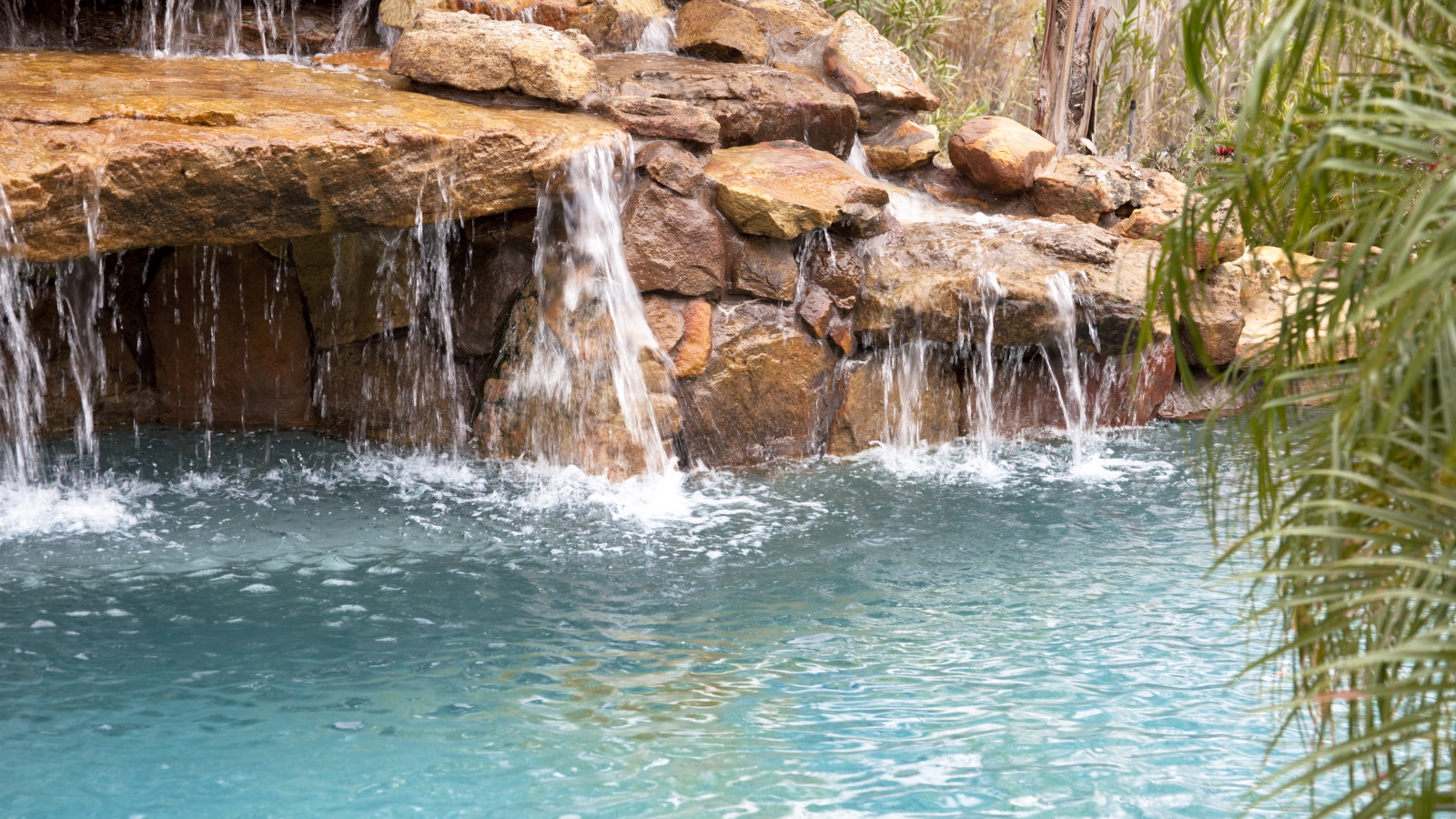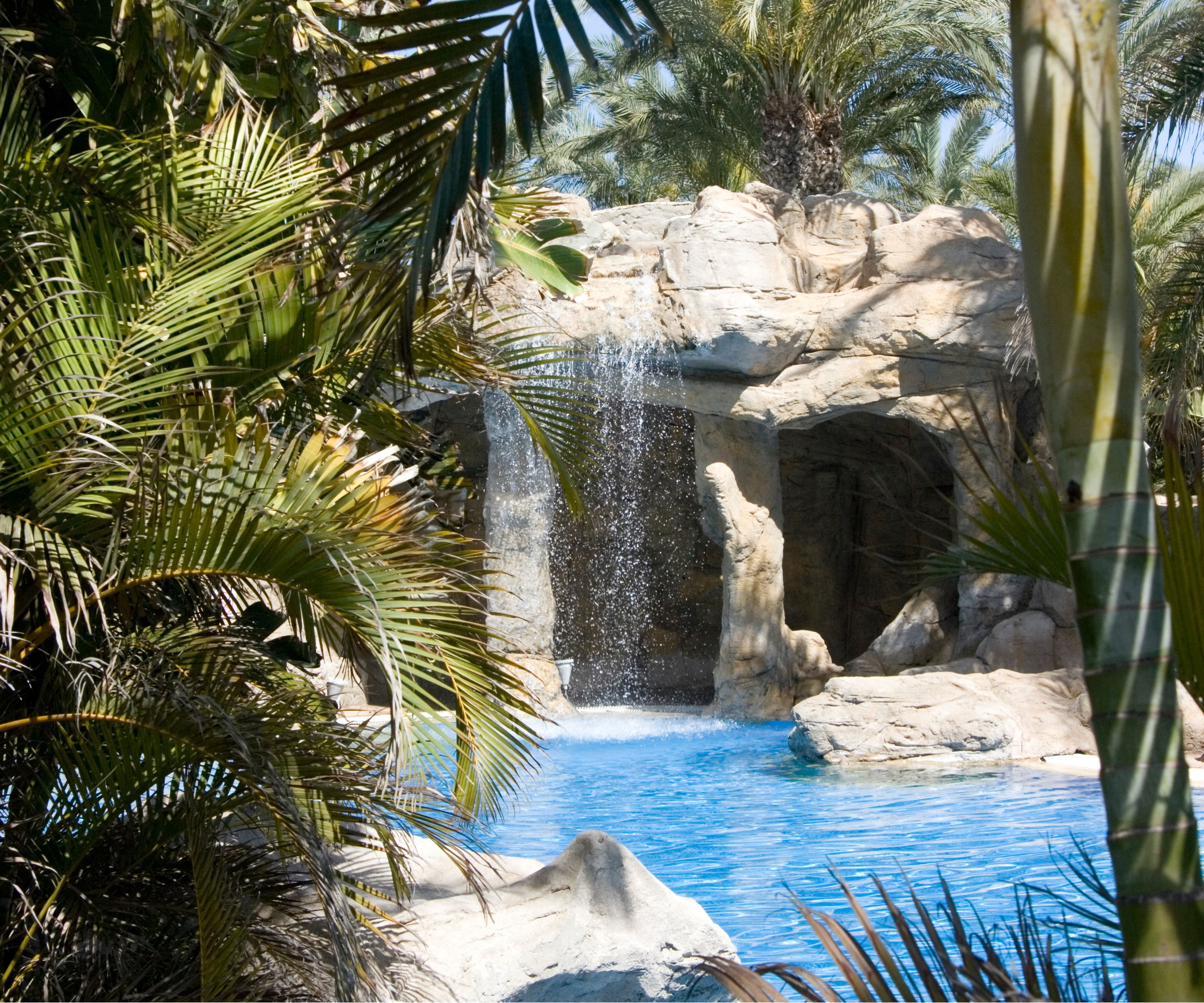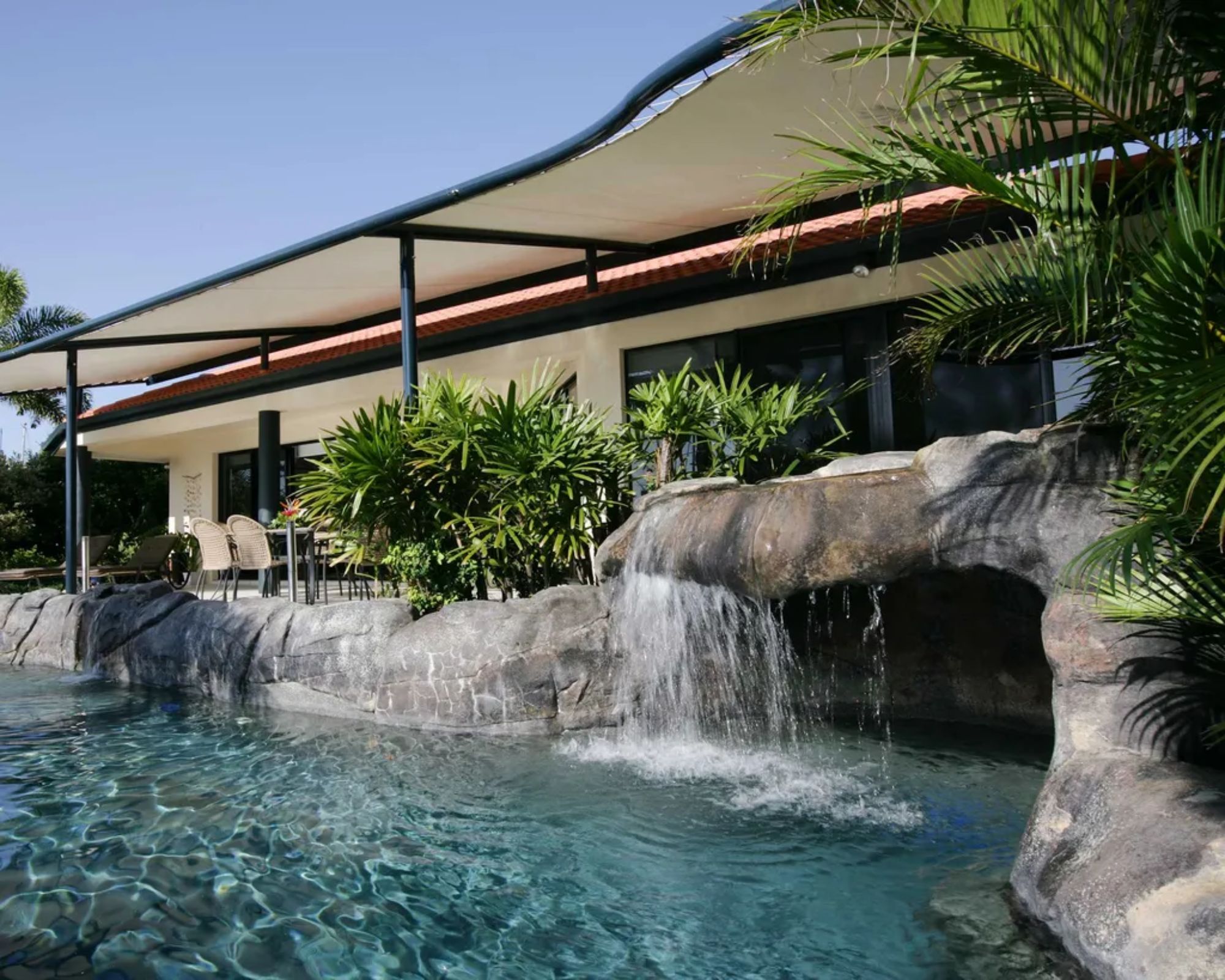What is a pool grotto? Explore how to transform your outdoor swimming area
This naturalistic design feature will create a secluded space that is both impactful, interesting and fun for all the family


Swimming pool grottos are a timeless and popular naturalistic design feature that can add drama to backyard swimming areas. Gone are the days of the simple, motel-like rectangular pool with sharp, square edges. Natural-looking swimming pools, with boulders and waterfalls, are now in vogue.
If you're looking for pool ideas that can give your backyard swimming area more character this year, or want your pool to complement the naturalistic planting design in your garden borders, incorporating a pool grotto might just be the transformational solution you are looking for.
So, what is a pool grotto? Traditionally constructed using boulders that often direct flowing water above, grottos draw inspiration from the natural landscape, transforming outdoor swimming pool areas into a paradise reminiscent of a far-away tropical retreat. Not only do pool grottos look great, but they are also a fun addition to any backyard for swimmers of all ages. Here, we share the pool grotto design basics to help inspire your pool landscaping ideas this year.

Swimming pool grottos
Inspired by the beauty of the natural world, pool grottos incorporate rock garden ideas by using boulders, large stones and waterfalls to transform outdoor swimming pool areas with a more organic, rustic look.
Basic things to know about swimming pool grottos

Put simply, a grotto is a small cave or overhang. Typically found in rocky areas, grottos are often seen along the coast where the sea has eroded large boulders and cliff faces to reveal unusual and dramatic shapes.
While incorporating grottos into the backyard is not a new thing, naturalistic aesthetics have grown in popularity in recent years, with many designers drawing inspiration from coastal landscapes and the natural world when considering how to landscape a backyard or exploring pool patio ideas. Landscape and swimming pool designers will be able to offer practical advice and help regarding how a pool grotto might be accommodated within your proposed or preexisting swimming pool design.
While size and shape will vary from design to design, pool grottos will often take the form of a small room behind an artificial waterfall, tending to measure four feet high by two feet deep which will ensure there is enough space to enjoy and use the hidden grotto, particularly important for those considering pool privacy ideas.
Design expertise in your inbox – from inspiring decorating ideas and beautiful celebrity homes to practical gardening advice and shopping round-ups.
Most pool grottos will be constructed using artificial rock, as opposed to natural stone. Today, artificial rock can be cast in a way that looks and feels much like the real thing but is a fraction of the weight and is significantly cheaper.
Many of those embarking on home and backyard renovation might consider pool grottos to be too complicated or too expensive, often thought of as something seen in the yards of celebrities, with Mark Wahlberg, Britney Spears and Rihanna all enjoying spectacular pool grottos. However, this is not the case. Today, there are many simple and cost-effective grotto options widely available.
Why install a swimming pool grotto?

Building a pool grotto in your backyard will add impact and drama to your swimming pool area. Incorporating a naturalistic aesthetic, pool grottos can elevate traditional swimming pools, particularly when water feature ideas are considered and implemented as part of the design. For example, a small space partially hidden by a waterfall is stylistically spectacular, but, also, will act as a calming and therapeutic space to retreat to in the yard.
Pool grottos can also be a fun addition to the backyard for use by friends and family and they are typically very popular with young swimmers who are excited by this secret room, often spending long hours of playtime in and around the grotto.
During the summer months, it can also be an exciting and useful space for adults, enjoying the privacy of a grotto that also serves to act as a meditative and reflective room that can be helpful to relieve stress.
Another benefit of a pool grotto is that it offers protection from the heat of the sun. While this will depend on where you live, this feature is very important for those residing in warm regions with hot climates who may be seeking pool shade ideas for the summer months ahead.
With the addition of pool lighting, either built-in or by using solar-powered, floating lights, the grotto can also be used at night, offering a functional and attractive space at all times of day. Floating (and waterproof) Bluetooth speakers, available here from Walmart, will also add an entertaining element to your pool grotto.
Shop for swimming pool accessories
FAQs
Can you add a grotto to an existing pool?
Both current and future pool owners should consider the addition of a pool grotto when thinking about backyard ideas. Landscapers and pool designers will be able to offer advice and consultation regarding options available to your specific site, but cheap, pre-made grotto kits incorporating artificial (and lightweight) rocks can be utilized to help you create a natural and cost-effective pool feature.
Installing a swimming pool grotto will add drama and interest to any backyard swimming area, creating a functional, hidden room that is fun for children and relaxing for adults.
If you are seeking backyard pool ideas in a naturalistic style, consider designing a natural swimming pool, also referred to as a natural swimming pond, that can be an impressive addition to the larger backyard.

Thomas is a Content Editor within the Gardens Team at Homes and Gardens. He has worked as a professional gardener for both public spaces and private estates, specializing in productive gardening, growing food and flowers. Trained in Horticulture at the Garden Museum, he has written on gardening and garden history for various publications, including The English Garden, Gardens Illustrated, Hortus, The London Gardener and Bloom. He has co-authored a Lonely Planet travel book, The Tree Atlas, due out in 2024.


